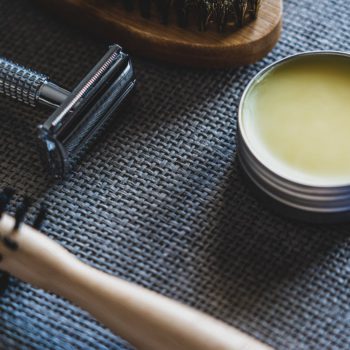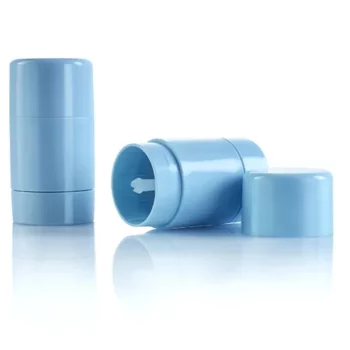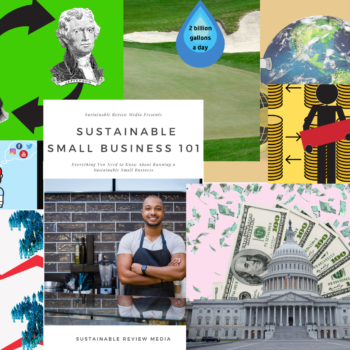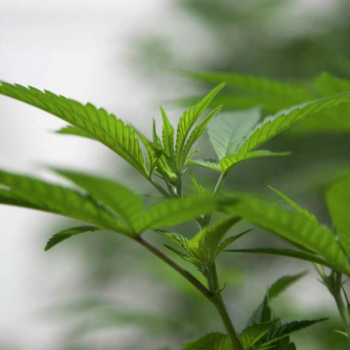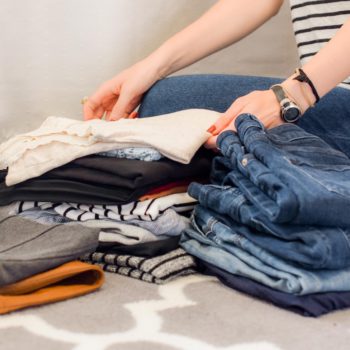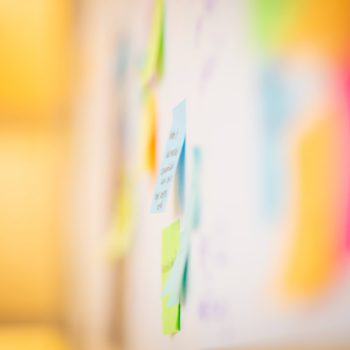|
|
We Reviewed. You Benefit.
Get Insider Access to Discounts on Top Sustainable Brands We've Reviewed Just for You! WEEKLY!
Coffee stands as a global favorite among beverages. It’s prevalent, with countless people starting their day with a cup.
In recent years, coffee consumption has seen impressive numbers. According to Statista, between 2021 and 2022, a significant amount of coffee was enjoyed globally. To put it into perspective, around 176 million bags were consumed, weighing 60 kilograms each. That’s a noteworthy increase from the year before, with 9 million more bags consumed.
Interestingly, this surge in consumption happened even though global coffee production slightly declined. According to the International Coffee Organization, coffee production fell by 1.4%, from 170.9 million bags to 168.5 million bags in the same period.
Yet, the demand for coffee continued to rise, illustrating the beverage’s continuously growing appeal and its steady hold on the daily routines of millions worldwide. No wonder the coffee industry and manufacturers are also riding this wave of popularity.
Innovations in brewing and serving methods are constantly being developed to keep up with the enthusiasts’ diverse tastes.
Take coffee makers, for example. These machines have transformed coffee brewing at home and in cafes. Many models are available, from basic drip coffee makers to sophisticated machines with built-in grinders. Each caters to different coffee drinkers’ preferences, making it easier to enjoy a perfect cup of coffee whenever the mood strikes.
Unfortunately, many coffee makers produced today are made from materials with the lowest recycling rates, like single-use plastics. Aside from contributing to environmental degradation, they can also negatively impact health.
If you are a regular coffee drinker concerned about the environmental impact of single-use plastics, chances are you are looking for a more eco-friendly brewing machine. In that case, investing in the best plastic free coffee maker is a great choice.
These coffee makers are designed to reduce plastic waste, eliminate harmful chemicals, and promote sustainability.
In this guide, we’ll highlight some of the best plastic-free and non-toxic coffee makers you can find today, allowing you to easily make the perfect coffee at home. We’ll also delve into the evolution of coffee makers, stepping back in time to see how they’ve changed over the years. We’ll also shed light on what plastic-free coffee makers are and unpack their connection to sustainability.
Additionally, we’ll examine the advantages these eco-friendly alternatives offer over traditional models. You’ll also learn about the essential attributes that define a top-notch plastic-free coffee maker.
Finally, we provide practical tips on how to maximize your use of a plastic-free coffee maker. From maintenance to brewing techniques, we ensure you get the most out of your sustainable kitchen addition.
The Best Plastic-Free Coffee Makers on the Market
Disclosure: This post contains affiliate links. If you make a purchase through these links, SR may earn a commission at no additional cost to you. The team only recommends products or services that we have either personally used or through deep research, which will add value to our readers. Thank you for supporting this site by using the provided affiliate links.
1. Chemex
The Chemex (Amazon) all-glass coffee maker is renowned for its sophisticated and timeless design. Its glass carafe adds a touch of elegance to your coffee brewing process and ensures that no plastic comes into contact with your coffee.
One of the critical features of the Chemex is its wooden collar, which not only acts as an insulator to protect your hands from the hot glass but also adds a warm and natural aesthetic to the overall look. The collar is securely tied with a leather strap, enhancing its classic appeal.
The Chemex uses a paper filter, effectively removing any sediment or oils, resulting in a clean and pure cup of coffee. Unlike other brewing methods involving plastic components, the Chemex guarantees that your coffee only interacts with high-quality glass and paper coffee filters.
The plastic-free brewing experience offered by Chemex ensures that your coffee tastes delicious and untainted and aligns with environmentally conscious choices. By opting for a Chemex, you can have peace of mind knowing that you are minimizing your use of plastic in the coffee-making process.
Overall, if you value both the flavor of your coffee and the aesthetics of your coffee brewing equipment, the Chemex is an excellent choice. Its glass carafe, wooden collar, and paper filters make it a classic and elegant option for those seeking a plastic-free brewing experience.
2. Technivorm Moccamaster
The Technivorm Moccamaster (Amazon) is one of the best plastic-free coffee makers for 2023. This coffee maker is perfect for those looking to reduce their plastic waste without compromising on quality. With its sleek and durable design, the Technivorm Moccamaster looks great on your countertop and delivers exceptional performance.
One of the standout features of this coffee maker is its use of high-quality materials. Unlike many other coffee makers, the Technivorm Moccamaster is made with stainless steel and glass, eliminating the need for plastic parts that could potentially leach harmful chemicals into your brew.
In addition to being plastic-free, this coffee maker also excels in functionality. It boasts a powerful heating element that ensures optimal brewing temperature, resulting in a rich and flavorful cup of coffee every time. The precise water flow system guarantees uniform saturation of grounds, allowing you to extract maximum flavor from your favorite beans.
3. AeroPress
The AeroPress (Amazon) is a versatile coffee brewer that offers a plastic-free brewing experience. It is made of high-quality BPA-free plastic and uses a reusable medical-grade stainless steel filter. The AeroPress allows you to brew traditional coffee and espresso-style shots, making it a popular choice for coffee enthusiasts.
The AeroPress is a compact and portable coffee maker that is great for travel or camping. It requires no electricity and is easy to clean, with all components being dishwasher safe. It is designed to produce smooth and flavorful coffee in as little as 1-2 minutes.
Overall, AeroPress offers a convenient and efficient way to brew coffee, with the added benefit of being environmentally friendly. Its versatility and durability make it one of the best non-toxic coffee makers that is a popular choice among coffee lovers of all levels of expertise.
4. Bean Envy Pour-Over
Bean Envy Pour-Over (Amazon) is a popular choice among eco-conscious consumers for its plastic-free design. It is an excellent option if you’re looking for a pour over coffee maker that eliminates the need for plastic. The entirely stainless steel construction ensures durability and longevity, making it a reliable choice for your morning brews.
The pour-over method gives you complete control over the brewing process, resulting in a rich and flavorful cup of coffee. With Bean Envy Pour-Over, you can enjoy the ritual of brewing your coffee while knowing that you are minimizing your environmental impact.
This coffee maker is plastic-free, easy to use, and clean. As your new coffee maker, add your favorite ground coffee to the stainless steel filter, pour hot water over it, and watch as your delicious cup of joe drips into the carafe below.
5. Cafellissimo Steel Dripper
If you want an alternative to traditional coffee makers, consider the Cafellissimo Steel Dripper (Amazon). This plastic-free coffee maker is one of the healthiest coffee maker options, making it an excellent choice for those who wish to reduce their environmental impact while enjoying a delicious coffee cup.
Here are four reasons why the Cafellissimo Steel Dripper should be at the top of your list:
- Superior Taste: The stainless steel construction of this dripper allows for optimal heat retention and extraction, resulting in a rich and flavorful brew every time.
- Easy to Use: With its innovative design, brewing with the Cafellissimo Steel Dripper is a breeze. Place it over your favorite mug or carafe, add your preferred ground coffee, pour hot water over it, and let gravity do its magic.
- Portable and Compact: This dripper is lightweight and easy to pack, whether camping or traveling. Say goodbye to bulky coffee machines on your adventures!
- Easy to Clean: Cleaning up after brewing has never been easier. The Cafellissimo Steel Dripper is dishwasher safe or can be quickly rinsed under running water.
6. Hario Ceramic Dripper
Consider the Hario Ceramic Dripper (Amazon) for a unique and flavorful experience when looking for a new way to brew your favorite coffee. This plastic-free coffee maker is not only eco-friendly but also delivers exceptional results.
The Hario Ceramic Dripper is made from high-quality ceramic material, ensuring optimal heat retention during brewing. Such material helps extract the full flavor of your coffee grounds and allows you to enjoy a rich and aromatic cup of coffee every time. Additionally, the ceramic material is non-reactive, meaning it won’t absorb any odors or flavors that could affect the taste of your brew.
One of the standout features of this dripper is its spiral ribs design. These ribs promote an even extraction by allowing water to flow uniformly through the coffee grounds, resulting in a well-balanced and smooth cup of joe. The large single hole at the bottom of the dripper further enhances this process by providing excellent control over brewing time.
The Hario Ceramic Dripper comes in different sizes, allowing you to choose one that best suits your needs. Whether you’re brewing for yourself or want to make multiple cups at once, a size option is available.
If you’re searching for a plastic-free non toxic coffee maker that delivers exceptional flavor and versatility, buying this coffee maker won’t leave you disappointed. It’s an investment worth making for any coffee enthusiast seeking a delightful brewing experience without harming the environment.
7. Bunn VP17-1SS
The Bunn VP17-1SS (Amazon) is highly recommended for a durable and efficient coffee maker. With its stainless steel construction, this machine is built to last and can withstand the rigors of everyday use. It boasts a sleek design that will complement any kitchen decor.
One of the standout features of the Bunn VP17-1SS is its brewing speed. This coffee maker can brew up to 3.8 gallons of coffee per hour, making it perfect for busy households or office settings where multiple cups are needed throughout the day. The fast-brewing time ensures you’ll never have to wait long for your morning caffeine fix.
In addition to its speed, the Bunn VP17-1SS also delivers on taste. It uses a unique spray head design that evenly distributes water over the coffee grounds, extracting maximum flavor with each brew. The result is a rich and flavorful cup of coffee that will satisfy even the most discerning palate.
Furthermore, this great coffee maker is easy to operate and maintain. It has simple controls and a no-nonsense design, making it user-friendly for beginners and experienced baristas. Cleaning is also a breeze thanks to its stainless steel construction, which resists stains and buildup.
If you’re searching for a dependable and efficient plastic-free coffee maker that will help you make a great cup of coffee every time, look no further than the Bunn VP17-1SS. Its durability, speed, and great-tasting results make it an excellent choice for any coffee lover.
8. Farberware Yosemite Percolator
The Farberware Yosemite Percolator (Amazon) is a popular option for those searching for a classic and reliable coffee brewing method. This stainless steel percolator offers a plastic-free alternative to traditional drip coffee makers, making it an ideal choice for environmentally conscious coffee lovers.
With its timeless design and sturdy construction, the Farberware Yosemite Percolator not only brews great-tasting coffee but also adds a touch of elegance to your kitchen countertop. Its durable stainless steel body ensures long-lasting performance, while the clear glass knob allows you to monitor the brewing process.
Using this percolator is simple. Just fill the water chamber with cold water, add your favorite ground coffee to the filter basket, and place it on the heat source. The water heats up and percolates through the coffee grounds, producing a rich and flavorful brew.
One of the advantages of using a percolator like the Farberware Yosemite is that you have complete control over the brewing time and strength of your coffee. Adjust the heat level accordingly if you prefer a strong or milder cup.
In conclusion, if you want a plastic-free coffee maker that combines functionality with style, consider investing in the Farberware Yosemite Percolator. Its classic design and reliable performance make it an excellent choice for coffee enthusiasts seeking an eco-friendly brewing method.
9. Yama Glass Stovetop Vacuum Brewer
If you’re searching for an alternative to traditional brewing methods, consider the Yama Glass Stovetop Vacuum Brewer (Amazon). This coffee maker offers a unique and visually stunning way to brew coffee.
The Yama Glass Stovetop Vacuum Brewer combines science and style to create a delicious and aromatic coffee experience. Its innovative design uses a heat source in the bottom chamber to create pressure, forcing water into the upper chamber and mixing it with the coffee grounds. As the heat source is removed, a vacuum pulls the brewed coffee back into the bottom chamber through a cloth filter.
One of the key benefits of this brewing method is its ability to extract flavors from the coffee beans without any plastic contact. The glass construction ensures no unwanted chemicals leach into your brew, producing a clean and pure taste.
This stovetop vacuum brewer also gives you complete control over your brewing process. You can adjust factors such as water temperature, grind size, and steeping time to customize your perfect cup of coffee.
In conclusion, if you’re looking for a plastic-free coffee maker that delivers style and flavor, look no further than the Yama Glass Stovetop Vacuum Brewer. With its innovative design and customizable brewing options, it’s sure to elevate your morning routine.
A Brief History of Coffee Makers
After looking at the best plastic-free and non-toxic coffee makers from some of the top coffee maker brands today, why not further increase your knowledge of how these brewing machines have evolved? These innovative brewing devices didn’t just appear overnight. There’s a history behind how they came about, and understanding how they operate is vital to gaining a new perspective on your daily brew and a greater appreciation for the devices that make it possible.
The history of coffee dates centuries to its discovery in Ethiopia. Over time, people have developed various methods to brew this beloved beverage, each reflecting its cultural, technological, and social context.
Initially, coffee was brewed using rudimentary methods, such as simply boiling coffee grounds in water. These early brews were likely gritty and inconsistent but laid the foundation for more sophisticated techniques.
As coffee spread worldwide, different cultures adapted their unique brewing traditions. In the Middle East, for example, coffee was often brewed in a unique pot called a “dallah” using a method similar to Turkish coffee, where finely ground coffee is boiled with water and sometimes sugar. This method produces a robust and aromatic brew with a thick layer of sediment at the bottom of the cup.
In Europe, the invention of the coffee percolator in the 19th century revolutionized the brewing process. This device laid the groundwork for modern coffee makers and used gravity to circulate water through coffee grounds, creating a more consistent and flavorful cup.
The 20th century saw the rise of espresso culture, particularly in Italy, where the first espresso machines were invented. These machines used high pressure to force hot water through the finely ground coffee, producing a small, concentrated espresso shot with a rich crema topping. This
Today, coffee lovers have multiple options for coffee makers, ranging from traditional drip models to modern pour-over devices and specialty equipment like the AeroPress.
Even though modern coffee makers come in diverse designs and constructions, most follow a similar fundamental brewing process. These machines typically perform a few essential steps to transform ground coffee into your favorite morning beverage:
- The basic process begins with placing coffee grounds into a filter.
- Water is then heated and poured over these grounds manually or by the machine.
- The hot water extracts oils and flavors from the coffee as it passes through the grounds, creating a rich and aromatic brew.
- Finally, the brewed coffee drips into a carafe or cup, ready to be enjoyed.
No matter the materials used in their construction, these steps remain consistent across most coffee-making methods. The key differences arise from how each coffee maker applies these steps and how users can interact with them to customize their brewing experience.
You can further explore how coffee makers work through the video below:
Modern Coffee Makers and Their Environmental Impact
For countless individuals, coffee makers have become a daily essential, integral to their coffee routine. Their convenience is unparalleled—turning the sometimes complex process of brewing coffee into an effortless task.
However, with this convenience comes an environmental cost, particularly concerning using plastic materials in coffee maker construction.
Since its introduction, plastic has been an essential material in the manufacturing and producing goods and appliances. Coffee makers use plastics for various components such as water reservoirs, brewing chambers, and handles.
While plastic offers benefits like affordability, durability, and ease of molding, the environmental impact of its production and disposal cannot be ignored.
Plastic manufacturing processes often involve extracting fossil fuels and releasing harmful emissions, contributing to air and water pollution. Additionally, many plastics are non-biodegradable and can persist in the environment for hundreds of years, posing threats to wildlife and ecosystems.
In coffee makers, single-use plastics, such as coffee pods and disposable coffee cups, contribute to the global plastic pollution crisis.
It should be noted that using coffee pods in the brewing method and its sustainability is a topic of contention. A recent analysis suggests it is more environmentally friendly than filter coffee when considering greenhouse gas emissions.
However, that doesn’t mean the waste they leave behind is not a problem. One research sheds light on the significant problem associated with coffee capsules, noting they contribute approximately 576,000 metric tons of waste worldwide. To put the size of this issue into perspective, consider this stark illustration: The number of Keurig cups discarded in 2014 alone could have encircled the Earth 12 times.
It is not just the environment that’s being affected by plastic-based coffee pods. Once items end up in landfills or oceans, they degrade into microplastics, which are proven harmful to marine life. To make matters worse, they also contaminate the food chain, affecting our health.
A study on this contamination, cited in Food Safety Magazine, reveals its impact on human consumption. In European countries where shellfish are eaten frequently, people may ingest up to 11,000 microplastic particles annually. By contrast, in places with lower rates of shellfish consumption, the average ingestion drops to about 1,800 particles annually.
These tiny plastic fragments can end up in our meals through seafood caught in polluted waters, highlighting the far-reaching consequences of plastic waste.
In an interview with Andrew Gray, a professor in the Department of Environmental Sciences at UC Riverside and an expert on the flow of plastic and microplastic contaminants through the environment:
“Some recent work on the toxicity of microplastics includes potential impacts on reproductive health, especially for males. There are concerns about inflammation. Micro and nanoplastic particles can cross organ boundaries and move through cell walls.”
However, it should be noted that a recent WHO analysis indicates that there isn’t much data right now to support the idea that microplastics are seriously harming people’s health. By highlighting gaps in the knowledge surrounding microplastics and human health, WHO’s analysis is an important starting point for understanding the potential risks associated with microplastic exposure. It can also help establish more explicit exposure routes and mechanisms of potential toxicity.
The video below, created by the UN Environment Programme, provides more information on how microplastics get into the food chain and how they can affect your health.
Plastic-Free Coffee Maker: A More Beneficial Option
The birth of coffee makers with no plastic is a response to both health and environmental concerns associated with their more conventional counterparts.
These brewing products use materials like stainless steel, glass, or ceramic. As eco-friendly alternatives, they contribute to minimizing the impact of coffee makers on health and the environment and enhance the coffee’s overall flavor by eliminating the possibility of plastic taste contamination.
These machines can range from manual methods, where the user directly controls the brewing process, to automated systems replicating traditional coffee making without involving plastic elements. The intricacies of their designs enable users to brew their coffee while feeling good about reducing plastic consumption and waste.
The best plastic-free coffee makers offer a range of advantages over their plastic counterparts. Here’s a breakdown of the key benefits:
| Benefit | Description |
| Reduced plastic waste | One of the main benefits of a plastic-free coffee maker is the significant reduction in plastic waste. Traditional coffee makers often include plastic components, such as water reservoirs, coffee baskets, and carafes. By choosing a plastic-free alternative, you can contribute to a cleaner environment by minimizing plastic pollution. |
| Eliminating harmful chemicals | Plastic coffee makers may release harmful chemicals, such as BPA (bisphenol A), into your hot coffee. BPA is a synthetic compound found in many plastic products, and exposure to it has been linked to various health issues. Opting for a plastic-free coffee maker allows you to enjoy your cup of coffee without worrying about potential toxins leaching into your brew. |
| Sustainable and eco-friendly | Plastic-free coffee makers are more sustainable and eco-friendly. They often feature durable constructions made from stainless steel that can last years. Many plastic-free coffee makers also come with reusable filters that help reduce waste. |
| Easy to Clean and Maintain | The non-porous surfaces lent by stainless steel or ceramic are easy to clean, preventing the buildup of coffee residue and ensuring optimal brewing results. |
| Stylish and Timeless Design | Glass and stainless steel coffee makers add an elegant touch to your kitchen decor and always stay in style. |
| Versatility in Brewing | Plastic-free coffee makers are compatible with various brewing methods, allowing experimentation and customization. |
You join the global efforts to protect our planet and enjoy your brew better by choosing a sustainable option for your coffee maker.
Features to Look for in a Plastic-Free Coffee Maker
When shopping for a plastic-free coffee maker, there are specific features that you should prioritize.
- Durable Construction: Prioritize coffee makers with durable and long-lasting construction to ensure years of reliable performance. Stainless steel coffee makers are known for their resilience and resistance to rust and corrosion, ensuring long-lasting performance. Also, stainless steel is a non-toxic material that does not leach harmful chemicals into your coffee.
- BPA-Free Materials: Ensure that the coffee maker is made from BPA-free materials. BPA is a chemical commonly found in plastics and can negatively affect human health. You can enjoy your coffee without worrying about toxicity by choosing a BPA-free coffee maker.
- Reusable Filters: Consider a coffee maker with reusable filters, as these filters offer environmental and cost-saving benefits. Unlike single-use paper filters, reusable filters can be easily washed and reused multiple times, reducing waste and minimizing your ecological footprint. Not only do reusable filters save money in the long run, but they also contribute to a more eco-friendly brewing process by reducing the consumption of disposable materials.
- Temperature Control: Look for coffee makers that offer precise temperature control settings. Brewing coffee at the ideal temperature is crucial to extracting the full range of flavors and aromas from your coffee grounds. Adjustable temperature controls allow you to customize your brew perfectly, ensuring a consistently delicious cup of coffee every time.
- Programmable Timer: Many modern coffee makers come with a programmable timer feature. It allows you to set the machine to start brewing at a specific time, ensuring you wake up to the enticing aroma of freshly brewed coffee. It’s a convenient and time-saving feature that can simplify your morning routine.
- Single-Cup Brewing: For those who prefer individual servings, consider a coffee maker with single-cup brewing capabilities. This feature allows you to make one cup at a time, reducing waste and ensuring every cup is as fresh as possible. Some models even offer compatibility with reusable coffee pods for added sustainability.
- Compact and Space-Saving Design: If you have limited counter space, look for coffee makers with a compact and space-saving design. These models are designed to fit snugly in smaller kitchens while still delivering exceptional coffee quality.
- Energy Efficiency: Choose a coffee maker with energy-efficient features, such as an automatic shut-off function. Doing so will enable you to conserve energy and provide peace of mind, knowing that your coffee maker won’t be left running unnecessarily.
- Warranty and Brand Reputation: Choose a product from a reputable brand with a good warranty. Knowing you can get support or a replacement if any issues arise can give you peace of mind.
- Price: Finally, consider your budget. While investing in sustainable options is essential, ensure that the coffee maker you choose is within your financial means.
Types of Coffee Makers Available in Plastic-Free Options
Plastic-free coffee makers come in various types to cater to different brewing preferences, ensuring a sustainable and eco-friendly brewing experience.
- Drip Coffee Makers: Drip coffee makers are a staple in many households, offering convenience and consistency in brewing. Plastic-free drip coffee makers are readily available, with options crafted from stainless steel or glass components. These machines operate by gravity, slowly dripping hot water over a coffee basket containing the grounds. The absence of plastic ensures that your coffee remains free from harmful chemicals. At the same time, the durable construction of stainless steel or glass guarantees long-lasting performance and a clean, flavorful brew every time.
- French Press Coffee: For those who prefer a hands-on approach to brewing, the French press offers a plastic-free alternative with a rich and robust flavor profile. Made with stainless steel and borosilicate glass, plastic-free French press coffee makers provide a simple yet effective brewing method. Coarsely ground coffee is steeped in hot water, allowing the flavors to be fully extracted before pressing down the plunger to separate the grounds from the liquid. Using stainless steel and glass ensures that no plastic comes into contact with your coffee, preserving its purity and taste.
- Cold Brew Makers: Cold brew enthusiasts can enjoy their favorite beverage without compromising sustainability with plastic-free cold brew coffee makers. These specialized coffee makers are designed specifically for brewing smooth and flavorful cold brew coffee by steeping coffee grounds in cold water for an extended period. Typically featuring stainless steel filters and glass carafes, plastic-free cold brew makers offer a high-quality brewing experience free from plastic contaminants. The result is a refreshing and aromatic cold brew perfect for hot summer days or when you crave a smooth, chilled coffee.
Making the Most of Your Plastic-Free Coffee Maker
To get the most out of your plastic-free coffee maker and ensure a consistently delicious cup of coffee, here are some essential tips to follow:
- Use Freshly Ground Coffee: Opt for freshly ground coffee beans for the best flavor and aroma. Grinding your beans just before brewing ensures maximum freshness and flavor extraction, resulting in a superior cup of coffee. This practice allows you to experiment with different grind sizes to achieve your desired taste profile.
- Maintain Proper Water Temperature: Consistency in water temperature is crucial for brewing excellent coffee. Ensure your water is heated to the appropriate temperature range recommended for your brewing method. Too hot or too cold water can lead to over-extraction or under-extraction, respectively, affecting the quality of your brew.
- Follow Brewing Guidelines: Different brewing methods require specific techniques and ratios to achieve optimal results. Whether using a pour-over, French press, or espresso machine, familiarize yourself with the recommended brewing guidelines for your chosen method. This includes the coffee-to-water ratio, brewing time, and agitation techniques.
- Regular Cleaning and Maintenance: Keep your plastic-free coffee maker in top condition by practicing regular cleaning and maintenance. Rinse the brewing components with warm water and mild detergent to remove any coffee residue after each use. Also, periodically descale your coffee maker to prevent mineral buildup, which can affect the flavor of your brew. Checking for any signs of wear and tear and promptly addressing any issues will ensure your coffee maker’s longevity and optimal performance.
- Experiment with Brewing Parameters: Be bold and experiment with brewing parameters to fine-tune your coffee brewing process. Adjust variables such as grind size, water-to-coffee ratio, and brewing time to customize your brew perfectly. Keep a brewing journal to track your experiments and record your preferred settings for future reference.
- Invest in Quality Coffee: The quality of your coffee beans plays a significant role in the taste of your brew. Invest in high-quality, freshly roasted coffee beans from reputable sources to elevate your coffee experience. Explore different coffee origins, roast levels, and flavor profiles to discover your favorites and expand your palate.
- Preheat Brewing Equipment: Preheat your brewing equipment, such as the coffee maker and brewing vessel, to ensure optimal temperature stability during the brewing process. This step helps to maintain consistent extraction and enhances the flavors of your coffee. Rinse the equipment with hot water before brewing to preheat effectively.
Making Coffee Without Any Plastic Components
If you aim to brew the best coffee while avoiding plastic, here are several methods that align with your goal while offering a pure taste experience:
- Use a stainless steel coffee maker. Investing in a stainless steel coffee maker is an excellent way to ensure a plastic-free brewing experience. Look for a coffee maker made of stainless steel, including the carafe, brewing chamber, and filter. Stainless steel coffee makers are durable, non-toxic, and provide excellent heat retention.
- Opt for manual brewing methods. Manual brewing methods, such as pour-over or the French press, offer a plastic-free alternative to automatic coffee machines. These methods use a combination of stainless steel or glass components, ensuring a plastic-free and customized brewing experience.
- Choose a coffee maker with a glass or ceramic carafe. If you prefer a more traditional brewing experience, consider a coffee maker with a glass or ceramic carafe. Glass and ceramic are non-toxic materials that do not alter the flavor of your coffee. They are also easy to clean and maintain, ensuring a plastic-free and high-quality brewing experience.
Conclusion
Amid the evolving sustainability landscape, coffee makers have transformed to resonate with conscientious living. Exploring the best plastic-free and non-toxic coffee makers today offers many possibilities for eco-conscious coffee lovers.
With these choices, our morning brews delight our taste buds and echo our commitment to a cleaner world and personal well-being. This collection of premier coffee makers goes beyond functionality, blending innovation, craftsmanship, and environmental awareness.
In an era where choices have a widespread impact, opting for plastic-free and non-toxic coffee makers signifies a collective commitment to a healthier planet.
By embracing these coffee makers, we embrace a future where our daily rituals harmonize with global aspirations for a greener, safer, and more flavorful world.
Key Takeaways
Reflecting on how our daily choices affect the planet, it’s clear that even small decisions can have big impacts. When it comes to coffee makers, choosing sustainable options is more than a personal preference; it’s a step towards a better future. Here are some actionable insights and considerations from this guide that are worth keeping in mind:
- Plastic-free coffee makers offer a sustainable and eco-friendly alternative to traditional plastic models, ensuring your brewing process is free from harmful chemicals and environmental impact.
- Drip coffee makers, French presses, and cold brew makers are among the types of coffee makers available in plastic-free options, catering to different brewing preferences and tastes.
- When choosing a plastic-free coffee maker, prioritize materials like stainless steel and glass, which are durable, non-toxic, and resistant to rust and corrosion.
- Plastic-free coffee makers are easy to clean and maintain, with reusable filters and components that can be washed and reused, reducing waste and minimizing your ecological footprint.
- By investing in a plastic-free coffee maker, you enjoy delicious and flavorful brews and contribute to a healthier planet for future generations.
Frequently Asked Questions
A plastic-free coffee maker eliminates the risk of harmful chemicals leaching into your coffee and ensures a healthier and safer brewing experience. It also reduces plastic waste and is more environmentally friendly.
A plastic-free coffee maker eliminates the risk of harmful chemicals leaching into your coffee and ensures a healthier and safer brewing experience. It also reduces plastic waste and is more environmentally friendly.
A non-toxic coffee maker is a coffee maker that is free from harmful chemicals such as BPA (bisphenol A) and phthalates. It is made of non-plastic coffee materials, such as stainless steel or glass, which do not release toxic substances into your coffee.
The best non toxic and plastic-free coffee makers can vary in price depending on the brand and materials used. While some may be more expensive, affordable options are also available. Investing in a plastic-free coffee maker can save you money in the long run by eliminating the need to buy disposable plastic coffee pods or filters.
While BPA-free plastic coffee makers may be considered safer than traditional plastic coffee makers, they can still pose potential health risks. Non-plastic alternatives, such as stainless steel or glass, are recommended to avoid exposure to plastic chemicals.
Some popular plastic-free coffee makers include French presses, Chemex pour-over brewers, and stainless-steel drip coffee makers. These options are known for their excellent brewing capabilities and non-toxic materials.
Cleaning a non-toxic coffee maker is similar to cleaning any other coffee maker. You can use warm, soapy water and a non-abrasive sponge or cloth to clean the components. Make sure to rinse the coffee maker to remove any soap residue thoroughly.
There are plastic-free coffee makers designed explicitly for making espresso. Look for stainless steel or manual espresso machines that do not use plastic parts.
Plastic-free coffee makers, especially those made from double-walled stainless steel, are known for their excellent heat retention. They can keep your coffee hot for an extended period compared to plastic coffee makers.
Yes, most plastic-free coffee makers allow you to use your coffee grounds. They often come with a mesh filter or a built-in filter system that eliminates the need for disposable paper filters.
You can find plastic-free coffee makers at specialty kitchenware stores, online retailers, and even some coffee shops. Additionally, many websites offer a wide selection of plastic-free coffee makers and customer reviews and ratings to help you make an informed decision.



